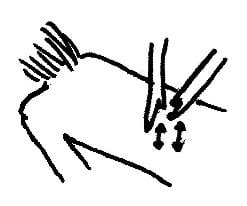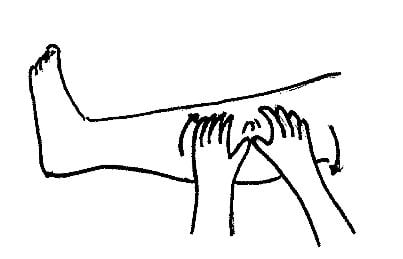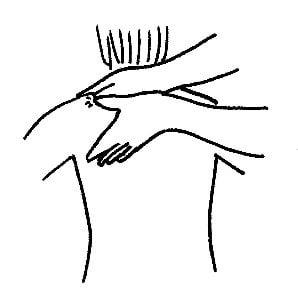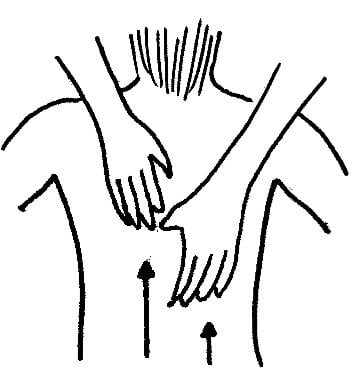Learning some basic massage techniques is the first step towards giving a massage that will provide great relaxation in the comfort of your home. You (and your partner) can benefit from a few simple massage moves that are easy to master.
Are you ready to learn how to give a massage?
Brushing Massage Technique

Think of your fingers like feathers. You want to lightly brush the skin. This particular technique is most effective at the end of the massage.
Karate Chop Massage Technique

You tap your partner’s skin with the outside edges of your hands. However, you need to remember that this isn’t a karate chop meant to break a piece of wood. Be gentle!
Try to keep a good rhythm and don’t tighten your wrists.
Kneading Massage

Have you ever made your own bread? Or perhaps watched your grandmother make bread? The kneading massage technique is very similar to kneading dough.
Using both your hands, roll and press the muscles like they were dough. You can use your fingers separately if you want or use them together in a larger kneading motion. Kneading muscles helps promote relaxation, improves circulation, and loosens tight muscles.
Massaging the Pressure Points

You have probably had “stress knots” at some point in your life. For me, stress tends to accumulate just below my neck, on my back and around my shoulders.
For other people, it may act on their lower back or somewhere else. You can normally detect these knots while you are massaging someone. They feel hard and resemble knots.
To release them, apply pressure with your thumbs and/or index finger. Press hard but not too hard that you hurt the person you are massaging. Keep the pressure for about 10 seconds, then release.
To enhance the benefits of this technique, the person receiving the massage should breathe in as you apply pressure and breathe out as your remove pressure.
How to Give Massage Strokes

| Try to picture your hands being the strong current in a river. Your hands move in long strokes, in a flowing motion. You can use both hands together or separately. The pressure is very light but heavier than finger brushing.
The benefits of using this particular massage technique are numerous. For example, this technique is normally done at the beginning of a massage session and aims to spread the massage oil. The strokes also help the recipient become accustomed to your touch so that the following movements don’t come as a surprise. |
Other Techniques for Massages
There are many other techniques that can be used to give massages in this world. Here are a couple more:
- Deep Friction. This technique is halfway between the stroke technique and the pinpoint pressure technique. You move your hands in strokes but need to apply a little more pressure. It’s particularly beneficial on sore muscles.
- Skin Rolling. Imagine trying to gently pull the outer skin layer away from the body by squeezing a little roll between your thumb and index finger. Move your hands forward while keeping the “rolled-up skin” between your fingers.
I hope that these massage techniques will come in handy for your next massage. Don’t forget that you don’t need to have someone else to massage you (although it helps!). If you are sore from running, you can massage your own calves. If you are stressed and feel some pain around your neck, you can try to relieve the stress knots yourself.
One important thing to remember when you use these massage techniques is to use great essential oils.
It’s Time to Give a Massage
You can double the benefits of the massage by combining physical relaxation with mental relaxation with such oils as lavender, chamomile, etc. Don’t be afraid to experiment a little, but start with small quantities.
Tips For Giving a Great Massage
Make sure to cover the “work surface” with a thick towel that will absorb excess oil but that will still bring additional comfort to the person receiving the massage.
Set the mood by adjusting the temperature.
Light up a few aromatherapy-scented candles.
Play some nice relaxing music.
Before applying oil to your partner’s skin, pour it in your hands and warm it up.
Keep you nails short. There’s nothing worse than scratching someone’s skin while they are trying to relax!
Cover your partner’s bottom with a towel if he/she desires.
Always work toward the heart. Work from the ankles up toward the thighs and from the fingers to the shoulders.
A body massage should always be distributed evenly across the body. Discuss the following proposed schedule with the person who will be receiving the massage, and you can adjust according to their availability (shorten the massage if needed) or according to where the person feels pain or tightness.
Here is a good time distribution.
- 20 minutes: back
- 5 minutes: back of right leg
- 5 minutes: back of left leg
- 5 minutes: neck, head and shoulder
- 5 minutes: chest and abdomen
- 5 minutes: right arm
- 5 minutes: left arm
- 5 minutes: front of right leg
- 5 minutes: front of left leg
Other Massage Guide Tips
Always use high-quality essential oils diluted in a carrier oil. If you don’t know which oils to use, I recommend a mix of lavender and sage. These two oils combine cleansing, detoxifying and relaxing effects.
Here is more massage information you may find useful:
- Learn Specific Massage Techniques With Illustrations
- Learn to Give Self-Massages
- Discover More About Massage Guide and Home Spa Treatments
Here is more massage-related information that may interested you:
